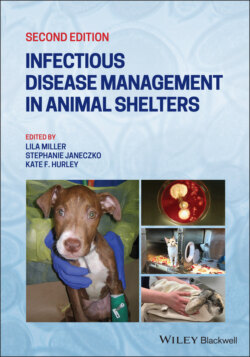Читать книгу Infectious Disease Management in Animal Shelters - Группа авторов - Страница 76
3.1 Introduction
ОглавлениеThe management of the health of shelter animals has improved dramatically over the past two decades. The development of shelter medicine training programs and the shelter medicine specialty has driven this progress. Many shelters have proactive healthcare plans for their populations with specific goals to improve population health. Population health‐related protocols such as those designed to improve animal flow, standardize intake exams, and manage risk during outbreaks are now common. However, another component of population healthcare management, routine monitoring of disease‐related summary data (metrics), has not been as widely adopted. This may be partially explained by the traditional emphasis on individual patient care for companion animals provided in veterinary training programs and private practices. Additionally, the widespread use of disease‐related metrics has also been hampered by shelter software that has been slow to facilitate entry and retrieval of the necessary data.
Summary metrics relating to disease surveillance, animal flow and capacity (housing and staffing) are discussed in this chapter to encourage shelter veterinarians to incorporate the use of these metrics into their population healthcare plans. As these metrics are used more extensively, other influential measures can be added.
